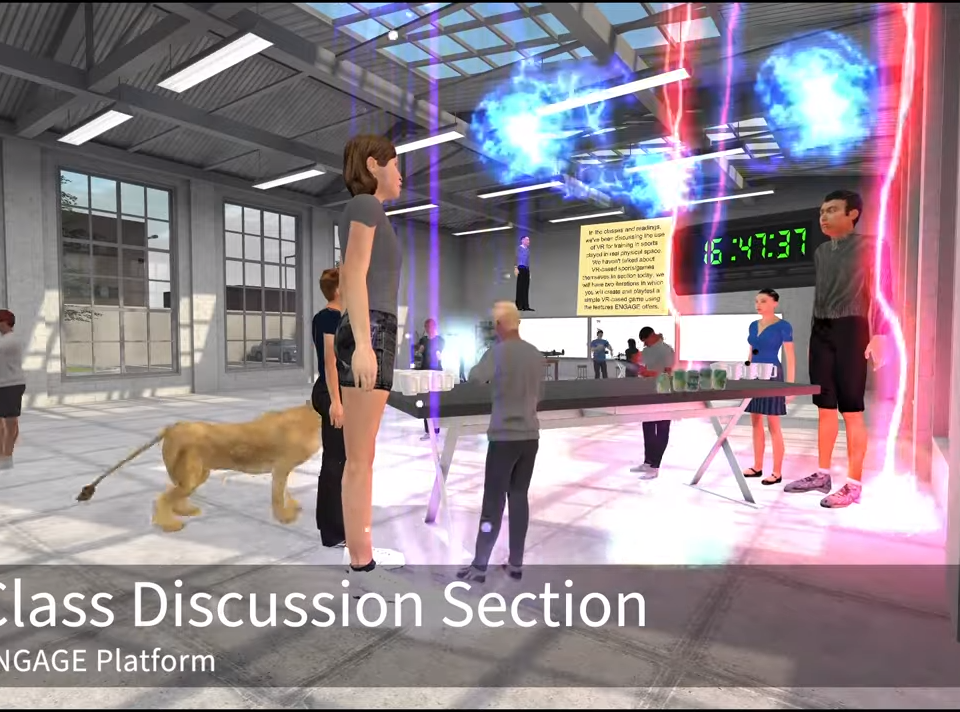In the last week, the Virtual Human Interaction Lab at Stanford University published its recent findings on the measured effects of time on various measures within a collaborative virtual environment, using ENGAGE as its VR platform of choice.
Tweet from Stanford University
“Overall, the results showed that all measures, including self, social, and spatial presence, enjoyment, entitativity, and realism increased over time. This underscores the critical role that time plays in how people’s experience in VR evolves. Given this, it is possible that once participants adapt to the medium and are no longer uncomfortable with the novelty of the technology, they are able to reap the advantages that VR and CVEs provide and feel more presence and connectedness.”
Among discovering that all measures increased over an 8-week period during the scheduled study, the Stanford University group found that participants’ sense of realism, entitativity, (perceiving a collection of social entities as possessing unity and coherence), and enjoyment all increased over time as well.
“We additionally investigated the role of visual appearance of avatars amongst members of a group, and found that, in accordance with previous literature, avatar appearance plays a significant role in some, but not all, aspects of individuals’ perception and experience in VR. As social VR and CVEs become more popular and perhaps integrated into everyday life, it is important to study not only at one moment in time but also across time, as well as how they transform the effects of factors such as avatar appearance and individual differences on VR use.”
The visual appearance of VR avatars also seems to play a significant role in some, although not all, elements of a person’s experience inside a VR environment. This points to the ongoing need to find ways for people to easily create a virtual version of themselves within platforms like ENGAGE – such as our face-mapping tool and top-to-bottom fully customizable avatars.
We’re excited to be partnering with the team of researchers at Stanford University as we continue exploring this new frontier of immersive engagement in all aspects of our online lives, whether personal or professional.

